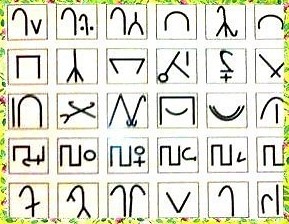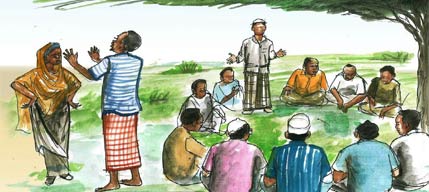The Somali Legal System (Xeer)

An example ,here ,we have the xeer symbols of Somalis in East Africa . They use still now these Symbols for their social regulation . Traditional Somali Costomary Symbols extracted from the book: "The Search for the Ugaas in the Xeer Tradition” by the Dr. Ali Moussa Iye.Chief of Intercultural Dialogue Section in Unesco
Xeer The Father and Child of the Somali Nation
The Somali nation did not begin with the common use of the Somali language by the clans, but rather with the collective observance of Xeer. Xeer is thus referred to as being both the father and child of the Somali nation.
The Xeer takes it place among such great legal systems of the world as the Roman law, the English common law, the Law Merchant, and the Jewish traditional law (Halacha). It must be extremely old and is believed to have developed in the Horn of Africa. There is no evidence that it developed elsewhere or was greatly influenced by any foreign legal system. The fact that Somali legal terminology is practically devoid of loan words from foreign languages suggests that the Xeer is truly indigenous.




 , wasn't expecting to see something like this on ss
, wasn't expecting to see something like this on ss